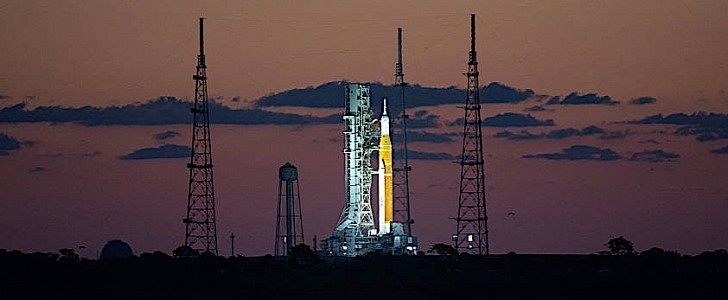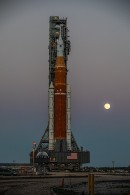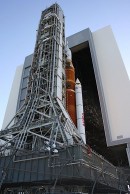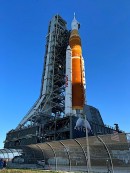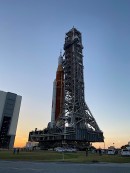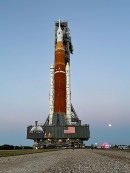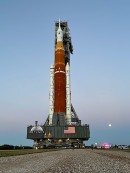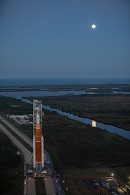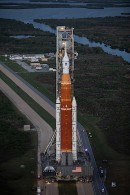Although to us civilians it may look like a tragedy, the postponement or even cancelation of a launch is not all that tragic for rocket scientists. In the relatively short history of space exploration, they’ve learned that failure is the best (and fastest) way to learn something.
At the end of last week, NASA was supposed to conduct the first major pad test for the Space Launch System rocket and the Orion capsule it will carry with it in its first Artemis mission around the Moon. That didn’t happen, on account of a technical glitch with the platform the rocket rests on and… lightning strikes hitting the launch pad.
The NASA team behind the project then intended to carry out the test, called wet dress rehearsal, on Monday, April 4, but that was not without issues either, and the procedure was scrubbed.
As per the requirements of this particular test, the rocket’s tanks were supposed to be filled with more than 700,000 gallons (3.18 million liters) of cryogenic fuel (liquid hydrogen and liquid oxygen). Then, a simulated countdown was to follow, stopping at about T minus 10 seconds, and that was to be followed by the draining of the fuel, so that the rocket could be transported back to the Vehicle Assembly Building for preparation for the flight.
First on the agenda of things not going quite right yesterday was a temperature limit issue for the liquid oxygen, which delayed the scheduled countdown, for hours. The team was eventually capable of filling the liquid oxygen tank at 50 percent capacity. That was enough for the team to assess how the core stage reacts when exposed to cryogenic liquids.
As it was getting ready to load the liquid hydrogen, another glitch with a pressure regulating valve on the mobile launcher surfaced, and given how “teams were nearing the end of their shifts, the launch director made the call to stop the test for the day.”
It’s unclear what will happen next, as this time NASA did not mention a date for a do-over of the test. We are told a “crew will investigate the issue at the pad,” and a decision on what to do next will be made.
The NASA team behind the project then intended to carry out the test, called wet dress rehearsal, on Monday, April 4, but that was not without issues either, and the procedure was scrubbed.
As per the requirements of this particular test, the rocket’s tanks were supposed to be filled with more than 700,000 gallons (3.18 million liters) of cryogenic fuel (liquid hydrogen and liquid oxygen). Then, a simulated countdown was to follow, stopping at about T minus 10 seconds, and that was to be followed by the draining of the fuel, so that the rocket could be transported back to the Vehicle Assembly Building for preparation for the flight.
First on the agenda of things not going quite right yesterday was a temperature limit issue for the liquid oxygen, which delayed the scheduled countdown, for hours. The team was eventually capable of filling the liquid oxygen tank at 50 percent capacity. That was enough for the team to assess how the core stage reacts when exposed to cryogenic liquids.
As it was getting ready to load the liquid hydrogen, another glitch with a pressure regulating valve on the mobile launcher surfaced, and given how “teams were nearing the end of their shifts, the launch director made the call to stop the test for the day.”
It’s unclear what will happen next, as this time NASA did not mention a date for a do-over of the test. We are told a “crew will investigate the issue at the pad,” and a decision on what to do next will be made.
